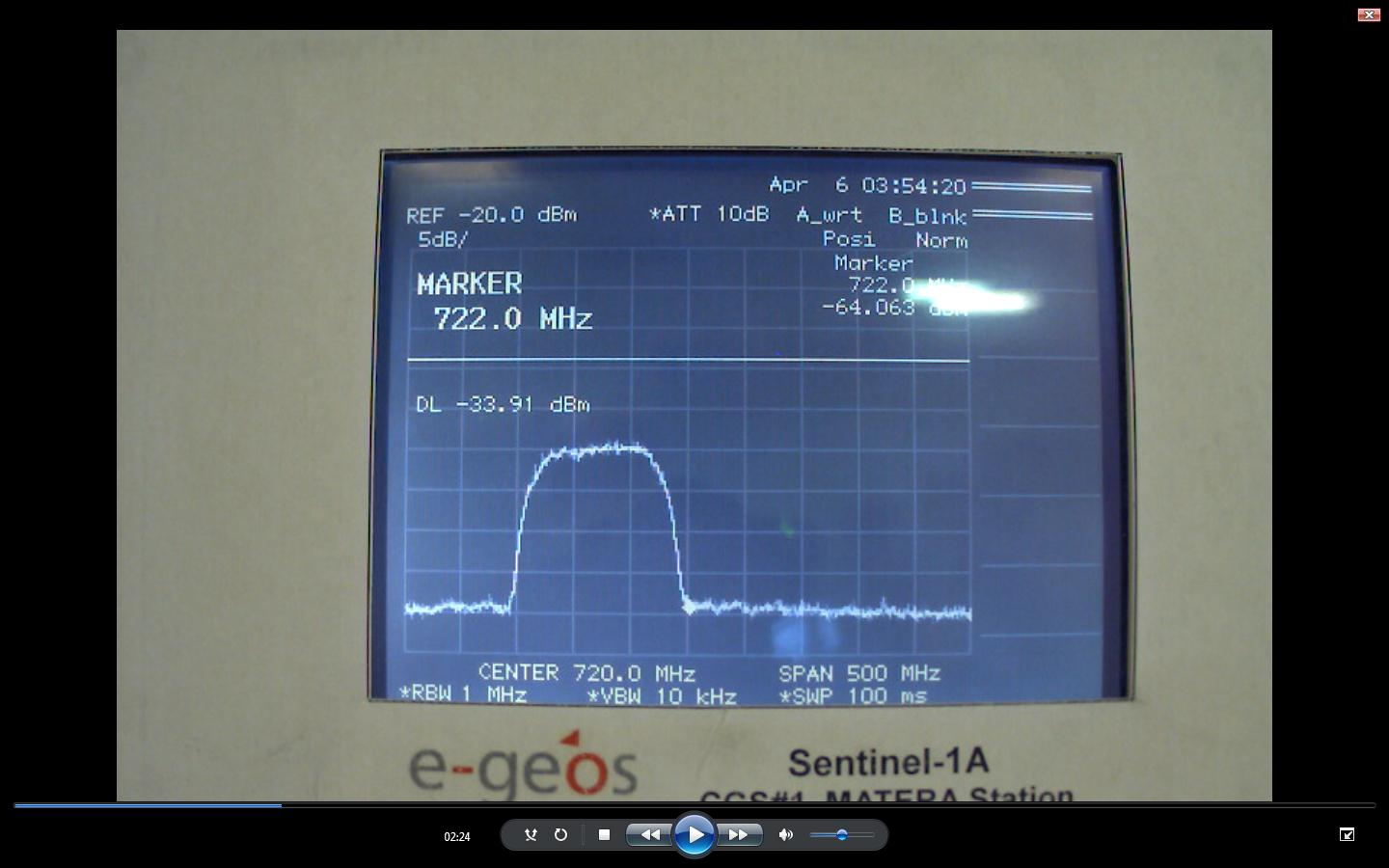Last Sunday, 06 April 2014 at 3:54 UTC, the first Sentinel-1A signal transmitted in X-Band was successfully acquired at the Matera ground station, South Italy.
Last Sunday, 06 April 2014 at 3:54 UTC, the first Sentinel-1A signal transmitted in X-Band was successfully acquired at the Matera ground station, South Italy.
This signal was containing GPS and housekeeping telemetry data that were circulated to the satellite control center at ESOC in Darmstadt and nominally processed.
This event demonstrated the receiving and pre-processing capacity of the station, and its readiness to support the satellite Commissioning Phase.
Matera 10-meter antenna getting positioned to acquire the first Sentinel-1A signal
Stefano Badessi from ESA declared:
“This is a great achievement! A lot of emotion is always associated to the appearance of the desired signal in real-time. But behind the signal we will get the real Sentinel-1A data from which the mission is made. I wish to congratulate e-GEOS in charge of the station operations as well as all the other industrial partners who have contributed to the development and the set up of the full acquisition and processing chain”

Sentinel-1A first X-band signal
Later on the same day, the Sentinel-1A radar was successfully switched ON for the first time in the so-called Wave Mode. The measurement data were recorded on board, downloaded and received at the Matera station. The acquired raw data were immediately circulated over the Copernicus Wide Area Network to the processing and archiving centre in Farnborough, United Kingdom. Here the data were automatically processed to generate level 1 data take. These data were then circulated to the Payload Data Management Center, located at the ESA Centre for Earth Observation (ESRIN) in Frascati where they were submitted to initial engineering checks.
This Wave Mode data take provided an early indication that the on-board radar is working nominally, and demonstrated that the full chain from commanding of the instrument up to the generation of the final data by the ground segment is up and running.
A second Copernicus Ground Segment X-band station, located in the Svalbard Islands (Norway) and operated by KSAT, also successfully acquired for the first time the Sentinel-1A signal on Monday 7 April in the afternoon. The Svalbard station has the capability to acquire all satellite passes during a day thanks to its very high latitude location. Together with the Matera station, it will support the Sentinel-1A commissioning phase activities, planned for a 3-month duration.
